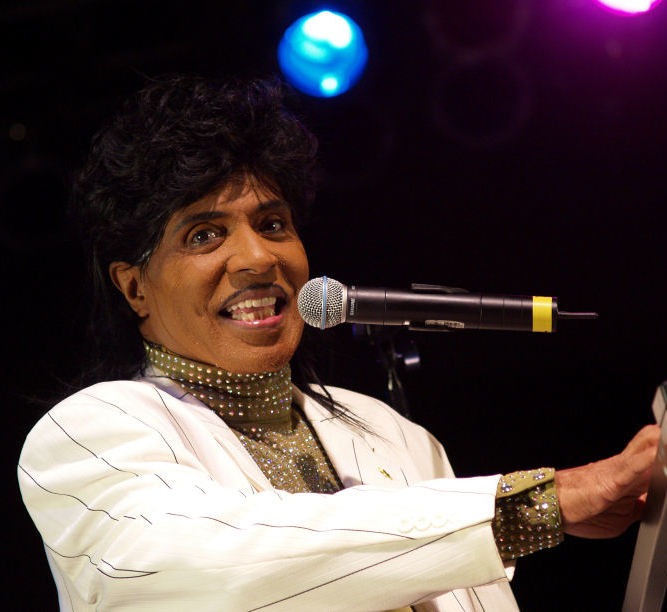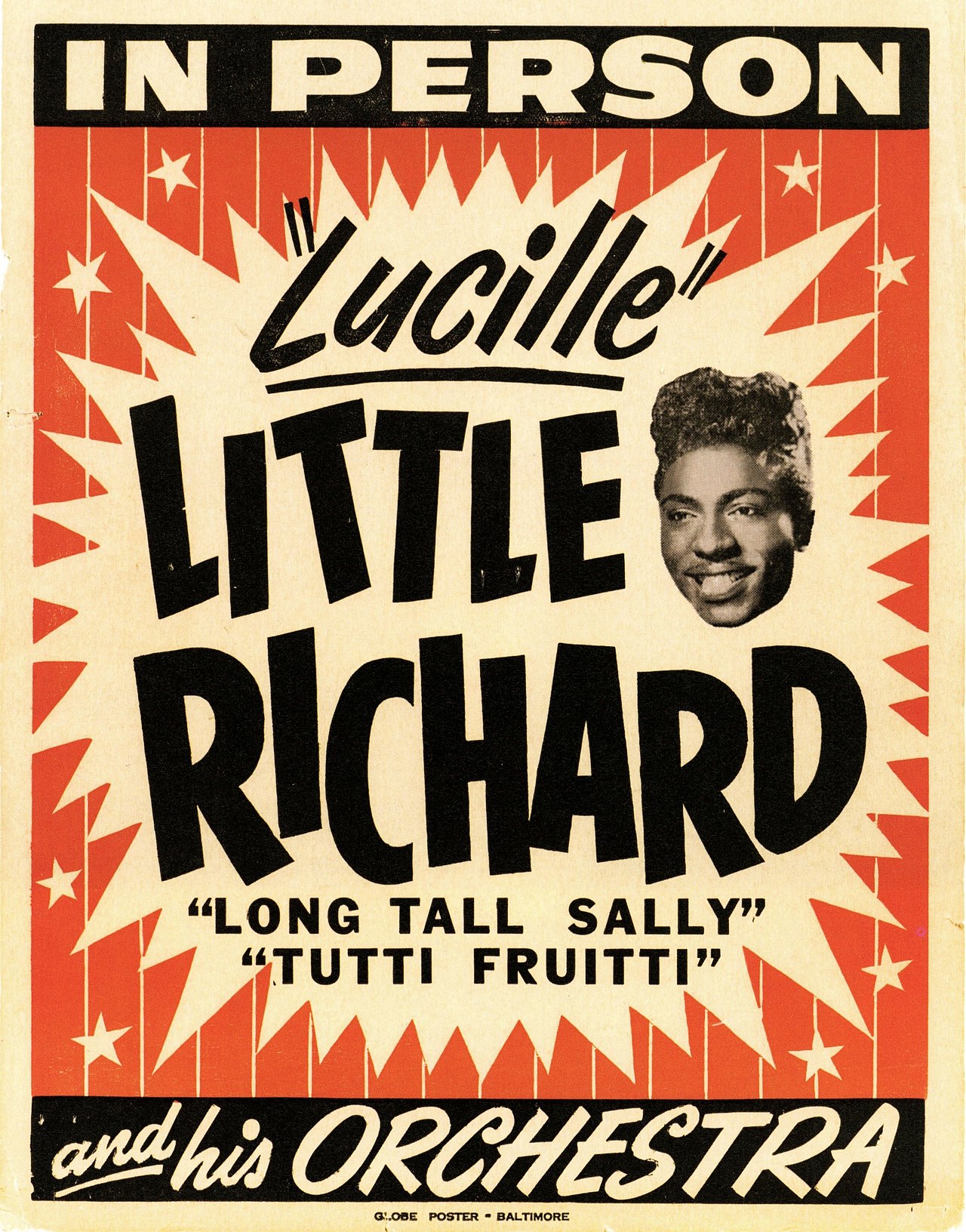Who doesn’t know Little Richard and his iconic style? He was a force in the forming of modern rock and roll. The self-proclaimed “Architect Of Rock and Roll”, singer,songwriter and pianist Little Richard (born Richard Wayne Penniman on December 5, 1932 in Macon, Georgia) has carried a lot of aliases including “The Real King of Rock and Roll”, “The King of Rockin’ n Rollin’”, “The Rhythm and Blues Soullin”, among others, which are true about him to some extent.
What truly set Little Richard apart was his larger-than-life persona. He was a master showman, known for his flamboyant attire, makeup, and dynamic stage presence. This audacity was more than just a personal style; it was a bold statement in the conservative climate of 1950s America. Little Richard broke down barriers, challenging norms of race, sexuality, and music. He influenced a wide range of artists, from The Beatles and Elvis Presley to Prince and Elton John, cementing his status as a founding father of rock and roll.
His loud, raspy vocals and wild stage presence had turned rock and roll into a more exciting, dynamic form. Penniman’s earliest influences included gospel; one of his idols, Sister Rosetta Tharpe, influenced his decision to take music as his future career. His first recording stint was at RCA records, where Penniman waxed off “jump blues” records; RCA loaned him to Specialty Records which paved him the way to stardom. His first single released on that label was “Tutti Frutti”, which became a top 10 R&B hit and Top 20 pop hit in 1956.
Little Richard’s other hits included:
- Tutti Frutti
- Long Tall Sally
- Slidin’ and Slippin’
- Rip It Up
- The Girl Can’t Help It
- She’s Got It
- Lucille
- Keep-A-Knockin
- Good Golly, Miss Molly
His personal life behind his successes were tumultuous, troubled by his decadent life, battles with drugs and his sexuality which was a taboo at that time; Little Richard even encountered a near-death experience over drugs-related debt. He managed to overcome these adversities and settle into a quiet life. For years Penniman has served as a minister while continuing to perform.
Richard Wayne Penniman proclaimed himself as “The Architect of Rock and Roll”. He has been known by other aliases, including: “The Real King of Rock and Roll”, “The King of Rockin’ n Rollin'”, “The Rhythm and Blues Soulin'”, among others. There is some justification to his rather boastful claims. According to music experts, he introduced funk into rock and roll music, and his loud, raspy vocals turned the genre into a more exciting, electrifying and dynamic form.
Early Life and Musical Influences
Penniman’s braggadocio and flashy persona onstage were formed early, coming from a very religious African Methodist Episcopal family, where singing was an essential part of the activity. His family performed in local churches and also entered in singing competitions. He was a faith healer when he was 10, and once thought of becoming a preacher.
His well-known sexual orientation was a bit of an issue within the family, who rooted him in devout Episcopalian Christian faith. Penniman’s father banished him from their home when he learned of his son’s effeminate mannerisms. When Penniman started recording, his father began to reconcile with him.
His earliest musical influences were mainly gospel singers like Marion Williams, Mahalia Jackson, and Sister Rosetta Tharpe. Tharpe once invited Penniman to sing a song with her onstage in 1945, and it was there that Penniman decided that his future career should be in music.
Early Music Career
Penniman began his career when he was in his teens, engaging in performing and living on the road that he soon began to lose his interest in his studies.
Penniman’s first foray into professional recording started when he was signed up to RCA Camden in 1951, waxing off “jump blues” (an uptempo type of blues) records. During his stay at Camden, a tragedy struck in the family when his father was shot to death by Penniman’s friend.
In 1953 he began recording for Peacock Records. But after releasing one record to the next under the label, none of them made any success in the charts. Unhappy with the state of his career, he began to form a new R&B band, and continued performing.
He recorded a demo for R&B/gospel label Specialty Records, which loaned him some money to buy out his contract from Peacock. There the road to success and fame opened for him. Penniman’s first single under Specialty, “Tutti Frutti”, was a song he actually written in freestyle, only re-written to become commercially viable.
Reaching Commercial Success, Experiencing Troubles and Evangelism
“Tutti Frutti” reached #2 in Billboard’s R&B charts in 1955. 17 subsequent hit singles followed, notably “Long Tall Sally”, “Rip It Up”, “Good Golly, Miss Molly”, and “Lucille”, among others. His characteristic driving piano performance, funky style, and wild screams in his songsmade Penniman, now Little Richard, famous.
With widespread fame and commercial success came with his experiences with low life, like with many rock n’ roll stars. He indulged himself in excessive drinking, and setting up orgies (particularly in the mid-1950s).
Little Richard decided to commit himself into evangelism in October 1957, and settled into married life. Since then he had been shunning himself from recording secular music, and instead established himself as a gospel singer, with some success. Three of his gospel songs he recorded in the early 60s, “He Got What He Wanted”, “He’s Not Just A Soldier”, and “Crying In The Chapel” (under Atlantic Records) were hit pop charts.
But difficulties in maintaining his Christian life and also his rocking marriage led him again to his earlier abject lifestyle. Little Richard also returned to recording secular rock-n-roll songs, but none of them matched the success of his earlier singles.
After a harrowing near-death encounter over drugs-related debt with his longtime friend, Little Richard decided to renew his Christian faith. He now manages to reconcile his spirituality with rock-n-roll, once stating that it is not impossible to be a devout Christian and play rock-n-roll music at the same time. Now considering himself as straight, he has stayed single for many years and been serving as a minister while remaining very much active in the music industry.
The Cultural Impact of Little Richard
Final Thoughts
Little Richard’s impact on music and culture cannot be overstated. He was not only a brilliant musician but also a symbol of freedom and self-expression. His contribution to the development of rock and roll laid the foundations for the genre and inspired countless artists to push the boundaries of music and performance. Even after his passing in May 2020, his spirit lives on in every vibrant chord and electrifying performance in rock and roll. Little Richard, the rock and roll dynamo, was a true trailblazer whose legacy will continue to reverberate through the ages.


